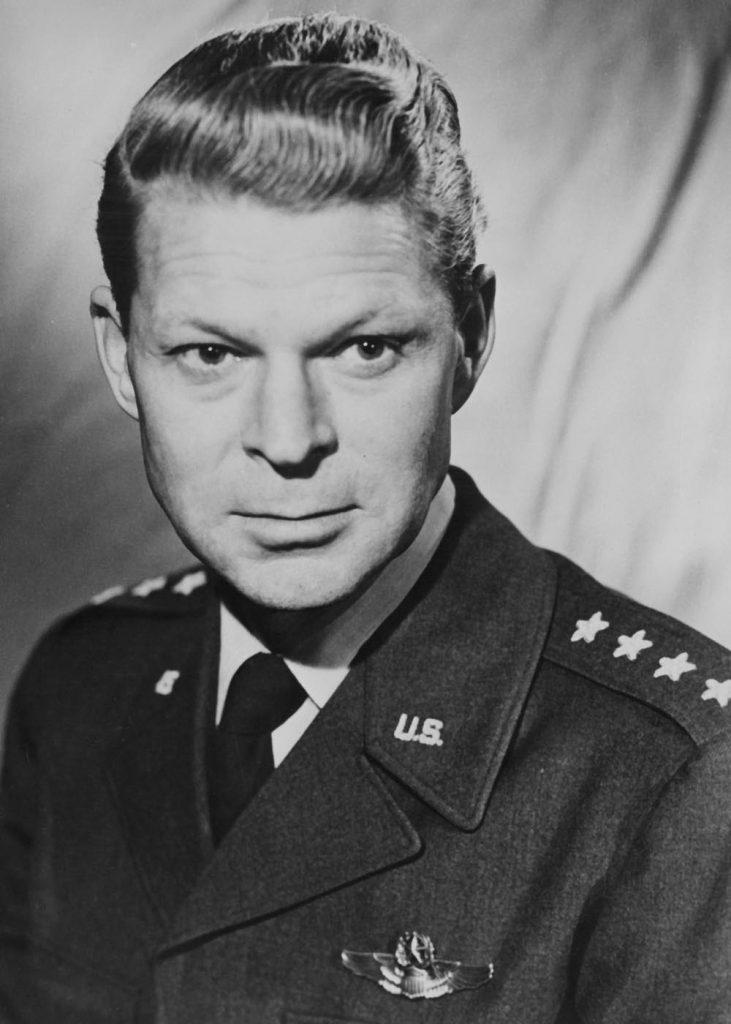Lauris Norstad was a United States Army Air Forces Officer and Chief of Staff, Twentieth Air Force toward the end of World War II. Serving in this capacity General Norstad, reporting to General Arnold. They were involved in the planning and implementation for the strategic bombing of Japan. This included the strategic planning of nuclear weapons use by the 509th Composite Group once deployed to Tinian.
Early Life and Military Career
Norstad was born March 24, 1907, in Minneapolis, Minnesota. He was the son of Rev. Martin and Marie Johnson Norstad, an immigrant Norwegian family. He had a sister and three brothers. When he was three years old the family moved to Red Wing, Minnesota, where Norstad graduated from Central High School in 1925. He was appointed to the Military Academy from the 3rd Congressional District of Minnesota. He graduated June 12, 1930 and was commissioned a second lieutenant of Cavalry.
That September he entered the Primary Flying School at March Field, and graduated from Advanced Flying School. He was then transferred to the Air Corps. in June of 1931.
Going to Schofield Barracks, Hawaii, in January of 1932, he was assigned to the 18th Pursuit Group, assuming command of it in July of 1933. In March of 1936 he was named adjutant of the Ninth Bomb Group there.
Transferred to Washington, D.C. in August of 1944, Norstad became the Chief of Staff of the 20th Air Force. The Naval Construction Battalion started building the B-29 Airfield before the Mariana Islands were declared secure, permitting the 20th Air Force to begin operations from Saipan. The first B-29 arrived at Isely Field, Saipan on October 12, 1944. By 22 November, over 100 B-29s of the 73rd Bomb Wing were operational from Isely Field. B-29 airfield construction also continued at a rapid pace at Guam and Tinian.
Manhattan Project
Norstad played an integral role in the Air Force component of the Manhattan Project. Working with General Groves he helped select the members of the Target Committee with his Deputy, William P. Fisher serving on the committee. He also worked with Curtis Lemay. Norstad did this quite diplomatically in a conversation with LeMay and in a follow-up 4 page letter dated May 29, 1945, titled “509th Composite Group: Special Functions”. This occurred a week before the first 509th Silver-plates departed Wendover Field, Utah on June 5.
This did not prevent LeMay from attempting to maintain control of the 509th CG, and placing his own combat crews aboard the atomic strike aircraft. General Groves quickly ended LeMay tampering with the 393rd, 509th CG strike force. On July 16, 1945, the day of the Trinity Test, Norstad was in Potsdam, Germany awaiting news from the Alamogordo shot.
After the War
Relieved from the 20th Air Force in February 1946, Norstad continued as the Assistant Chief of Air Staff for Plans until the following June. He was then appointed the Director of the Plans and Operations Division of the War Department in Washington, D.C. Here, he was instrumental in writing the legislature which created the United States Air Force, signed into law by President Truman on September 18, 1947. In the 1950s and 1960s, he spent time in West Germany, and time working with NATO, eventually becoming the Commander of all NATO Forces in Europe.
He retired from active duty in 1963. Later that year he began to work for the Owens-Corning Fiberglass Corp, and became the President of it. From 1967 to 1972, he was the Chief Executive Officer and Chairman for the Corp. After retirement he lived in Tubac, Arizona. He passed away at the age of 81, on September 12, 1988.
His decorations include the Distinguished Service Medal with an oak leaf cluster, a Silver Star, a Legion of Merit with an oak leaf cluster, an Air Medal, and the French Legion of Honor. He is rated a Command Pilot, a Combat Observer, and a Technical Observer.
Click here to see a video of Norstad giving a report speech in 1945.





